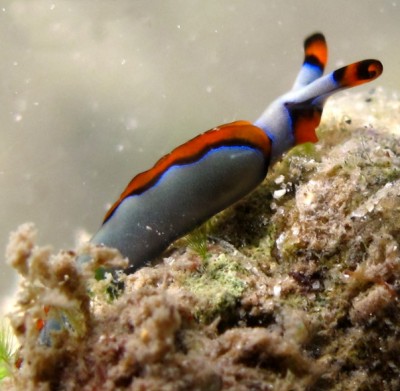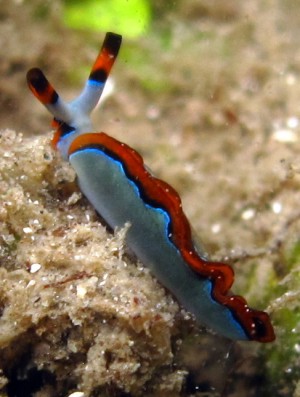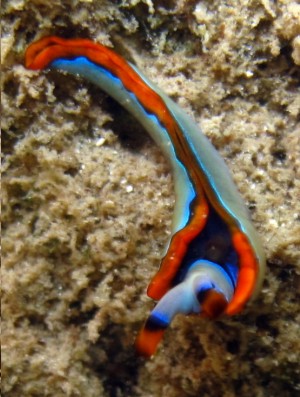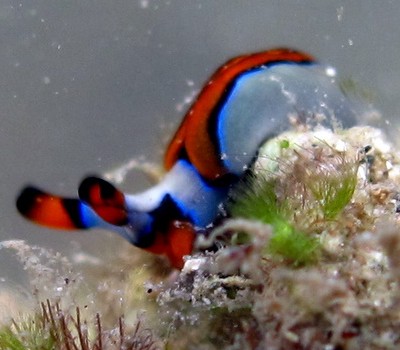Rediscovery of Kelaart's Thuridilla coerulea from Andaman and Nicobar Islands
April 14, 2010
From: Vishal Bhave

Concerning message #23355:
Dear Bill,
We were their in Andamans too with Sreeraj when he found Thuridilla moebii. Though his message is about slug from the island of Nicobar we got a similar looking species in the Andamans too, one with the spots on brownish parapodial margin and another without those spots.
One other species which has very similar external characters is Thuridilla coerulea (Kelaart 1858). Eliot in his 1906 publication stated that it
"can hardly be anything but Elysia lineolata of Bergh, which has a similarly gorgeous coloration, though there are some differences in detail. For instance, in Kelaart's animal the rhinophores have not red tips, but a red ring below a black tip."
I got this information from Gosliner (1995).
Locality: Near by Wandoor, 0.3 metres, Andaman & Nicobar, India, Andaman Sea, 8 March 2010, Intertidal, some Dead coral rocks beneath sediment. Length: 12-18 mm. Photographer: Vishal Bhave.
- Gosliner, T.M. (1995) The genus Thuridilla (Opisthobranchia: Elysiidae) from the tropical Indo-Pacific, with a revision of their phylogeny and systematics of the Elysiidae. Proceedings of the California Academy of Sciences, 49(1): 1-54.
Vishal Bhave.
vishalbhave@gmail.com



Dear Vishal,
This is an interesting find, and as you say it matches Kelaart's Elysia coerulea very well. It is certainly similar to T. lineolata but one major difference is that in that species there is a black and orange band along the base of each parapodia which is absent in Kelaart's illustration of T. coerulea and in your animals as well. Thuridilla coerulea is almost identical to the species that Gosliner has named T. undula, differing in two details of the colour pattern. As its name suggests, the orange parapodial border in T. undula undulates with deep incursions into the blue part of the parapodia, while in your T. coerulea the orange band is almost straight. The only other difference appears to be that the tips of the rhinophores are black in T. coerulea, as described by Kelaart, while in T. undula this black tip is absent.
It is possible that T. undula, rather than T. lineolata, is a synonym of the earlier T. coerulea but I guess we should wait until we know more about the variability found in both 'species'.
Best wishes,
Bill Rudman
Related messages
-
Re: Rediscovery of Kelaart's Thuridilla coerulea from Andaman and Nicobar Islands
From: Vishal Bhave, April 29, 2010
